Maintaining compliance with the Health Insurance Portability and Accountability Act (HIPAA) Security and Breach rules is not a one-time effort. It’s an ongoing project that spans the entire life of your organization. With the rise of new and emerging changes in work environments, evolving technologies, and increasingly sophisticated criminal methods, securing and protecting patient health information (PHI) has never been more critical.
The key to ensuring long-term compliance lies in establishing formal policies and procedures that govern your information security program. These protocols not only help your organization maintain compliance but also reduce the time and effort needed to manage compliance risks effectively. Below are some of the most crucial areas of control within a well-operating information security program that, if not properly managed, could result in significant risks of non-compliance with HIPAA.
- Risk Management— Risk management is at the core of any effective information security program. Your organization must implement a process for conducting regular risk assessments to identify, manage, and mitigate information security risks. This continuous evaluation allows you to stay ahead of potential threats, ensuring that your systems and processes evolve in line with emerging risks.
- Security Awareness Training— One of the largest areas of vulnerability across industries remains user awareness. Employees can be the first line of defense against security threats, but they can also be the weakest link if they lack proper training. Implementing a regular security awareness training program is vital for educating staff on best practices, social engineering risks, and acceptable information use behavior. This proactive approach helps safeguard sensitive data and supports compliance with HIPAA while also enhancing overall risk management strategies.
- Incident Response Planning— Every organization must have a robust incident response plan in place. This plan should be well-documented, regularly updated, and thoroughly tested to ensure effectiveness. Consistently reviewing your incident response plan ensures that your team can act swiftly and efficiently in the event of a security incident, minimizing the damage to both your systems and your reputation.
- Access Control Policy— Proper access control is another critical component of an information security program. Organizations must maintain a consistently enforced and documented process for managing access to protected information and assets. This includes ensuring that employees only have access to the information necessary to perform their job roles and conducting regular access audits to confirm compliance with established policies. A strong access control policy helps prevent unauthorized access to sensitive data, reducing the risk of a HIPAA breach.
- Vendor Management— Organizations increasingly rely on third-party vendors to handle, store, and process data, making vendor management an essential aspect of HIPAA compliance. Covered entities must conduct thorough due diligence before contracting with third parties that will have access to PHI. This includes reviewing independent audits, evaluating policies, and inquiring into the vendor’s compliance practices. Vendor management is not a set-it-and-forget-it task—it is an ongoing process that must be maintained throughout the contractual relationship to ensure continued adherence to HIPAA requirements.
HIPAA compliance requires a proactive, continuous effort, and establishing well-documented, robust controls within your information security program is crucial for long-term success. By focusing the above areas, your organization can minimize risk and protect patient health information effectively. Keeping these controls in check helps ensure that your organization remains compliant with HIPAA regulations, no matter how the digital landscape evolves.
If you need further guidance or have any questions on this topic, we are here to help. Please do not hesitate to reach out to discuss your specific situation!
This material has been prepared for general, informational purposes only and is not intended to provide, and should not be relied on for, tax, legal or accounting advice. Should you require any such advice, please contact us directly. The information contained herein does not create, and your review or use of the information does not constitute, an accountant-client relationship.


